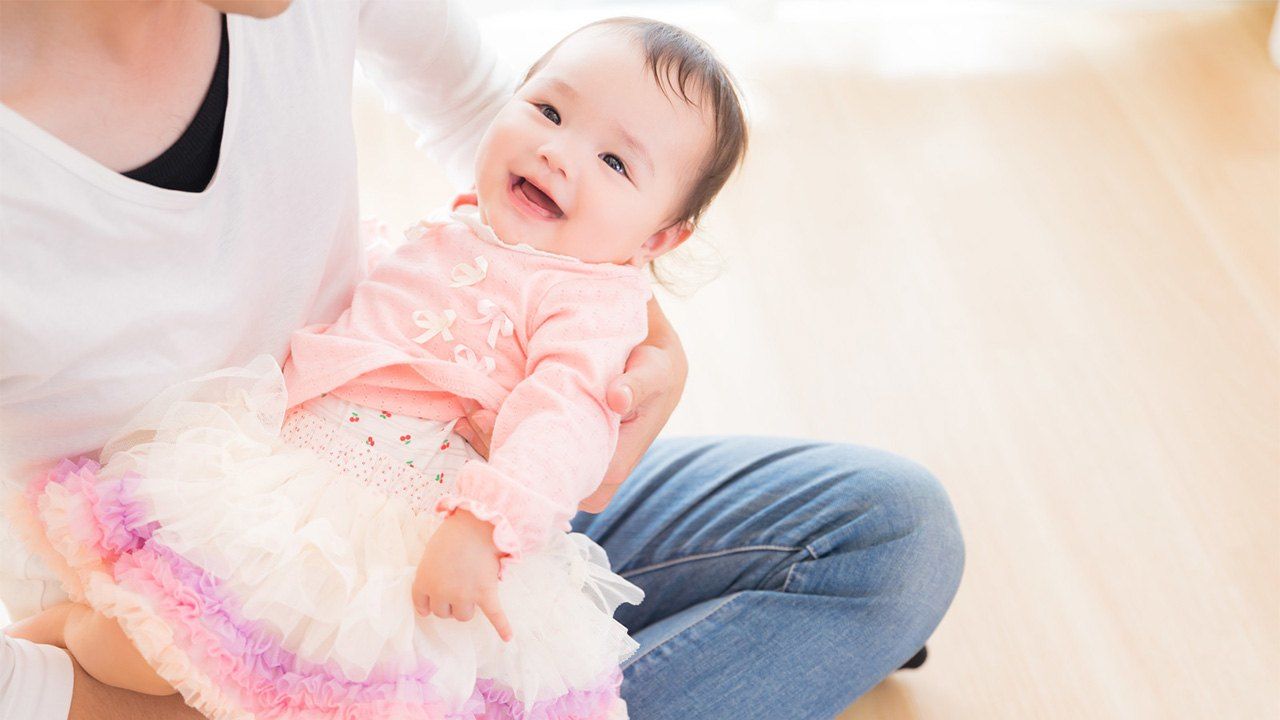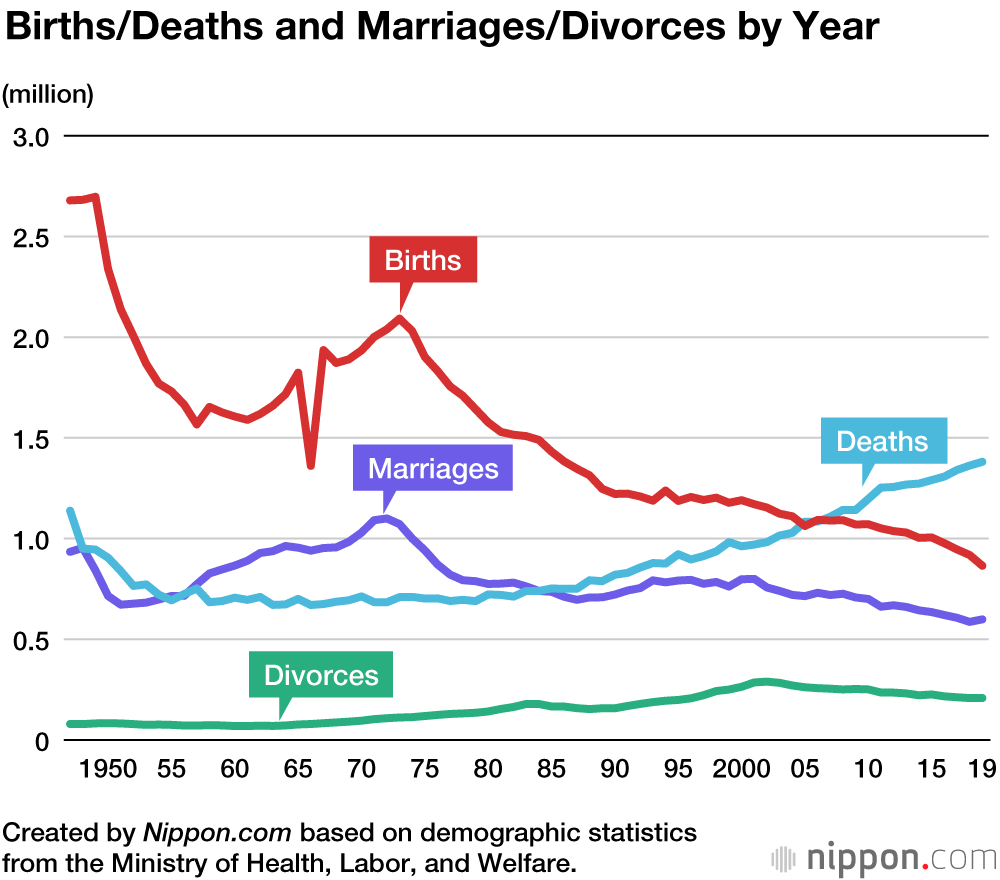
Japan’s Deaths Exceed Births by Half a Million in 2019
Society Lifestyle Health- English
- 日本語
- 简体字
- 繁體字
- Français
- Español
- العربية
- Русский
The number of annual births in Japan fell year-on-year by 53,000 in 2019, to 865,000. Provisional demographic statistics published by the Ministry of Health, Labor, and Welfare also indicate that the total fertility rate—the average number of children born to each woman during her lifetime—decreased by 0.06 point to 1.36 in 2019.
Japan’s Demographics
| 2019 estimate | 2018 | 2017 | |
|---|---|---|---|
| Births | 865,234 | 918,400 | 946,065 |
| Total fertility rate | 1.36 | 1.42 | 1.43 |
| Deaths | 1,381,098 | 1,362,470 | 1,340,397 |
| Natural population change | -515,864 | -444,070 | -394,332 |
| Marriages | 598,965 | 586,481 | 606,866 |
| Divorces | 208,489 | 208,333 | 212,262 |
Created by Nippon.com based on demographic statistics from the Ministry of Health, Labor, and Welfare. The natural population change is calculated based on the difference between the number of births and deaths.
As Japan continues to gray, there was a new postwar record for annual deaths at 1,381,000. The natural population decrease of 516,000 was the largest ever drop.
In Japan’s first baby boom (1947–49) there were more than 2.5 million births each year, while the second baby boom (1971–74) saw over 2 million annual births. Since then, however, the number has fallen continuously, slipping below the number of deaths for the first time in 2007. As the children of the second baby boom are now in their late forties and past typical childbearing age, the number of births is expected to continue to drop.
The number of marriages bucked a recent downward trend, rising 12,500 to 599,000. It was the first increase for seven years as many couples viewed the start of the new Reiwa era, which began on May 1, 2019, as an auspicious time to wed.
(Originally published in Japanese on June 5, 2020. Banner photo © Pakutaso.)

